Hair Transplant in Mexico City
Search and Compare the Best Clinics and Doctors at the Lowest Prices for Hair Transplant in Mexico City
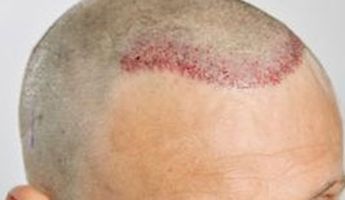
Find the best clinics for Hair Transplant in Mexico City
With Medijump you can browse 2 facilities offering Hair Transplant procedures in Mexico City. The cheapest price available is $2,063 in Monterrey
Hair Transplant in Mexico
Price: $ 2,063
Hair Transplant in Monterrey
Price: $ 2,063
Hair Transplant in Cancun
Price: $ 2,368
Egypt offers the best prices Worldwide
Price: $ 126
Uranga Hair Center, located in Alvaro Obregon, Mexico City, Mexico offers patients Hair Transplant procedures among its total of 3 available procedures, across 1 different specialties. Currently, there's no pricing information for Hair Transplant procedures at Uranga Hair Center, as all prices are available on request only, whilst the national average price is approximately $2,671. All procedures and treatments are undertaken by the lead specialist at the Hospital, and they have multiple recognized accreditations, including: AAFPRS - American Academy of Facial Plastic and Reconstructive SurgerySMORLCCC - Sociedad Mexicana de Otorrinolaringologia y Cirugia de Cabeza y Cuello A.C.ABHRS - American Board of Hair Restoration Surgery
Centro Dermatológico Giovanni Bojanini - Puebla, located in Alvaro Obregon, Mexico City, Mexico offers patients Hair Transplant procedures among its total of 5 available procedures, across 2 different specialties. Currently, there's no pricing information for Hair Transplant procedures at Centro Dermatológico Giovanni Bojanini - Puebla, as all prices are available on request only, whilst the national average price is approximately $2,671. There are many specialists available at the Hospital, with 4 in total, and they have multiple recognized accreditations, including: ISHRS - International Society of Hair Restoration SurgeryESHRS - European Society of Hair Restoration Surgery
Compare Before & After Photos of _procedure_photos.phpHair Transplant
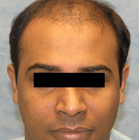
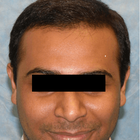
Front view
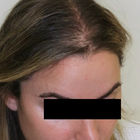
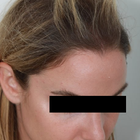
Half-side view
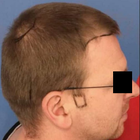
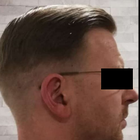
Full-side view
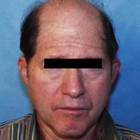

Front view
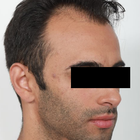
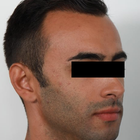
Half-side view
WHY US?
At Medijump, we're making medical easy. You can search, compare, discuss, and book your medical all in one place. We open the door to the best medical providers worldwide, saving you time and energy along the way, and it's all for FREE, no hidden fees, and no price markups guaranteed. So what are you waiting for?

Free

Best Price

Widest Selection

Risk-Free
What you need to know about Hair Transplant in Mexico City

Hair Transplantation, also known as hair restoration surgery, is the surgical process of moving hair follicles from one part of the body that is rich in hair (known as a donor site) and embedding them at the the bald area of the head (recipient site). The medical course of action that aims at addressing hair loss issues and improving aesthetics. While there are many causes of hair loss, the most common reason, especially for men, is genetics. Hereditary hair loss as men age is the number one leading factor of baldness.
It is a minimally invasive procedure, performed under local anesthetic and is most commonly used to treat male baldness, but the technique can also be used to restore eyelashes, eyebrows, beard hair and to fill in scars. The procedure usually lasts between 4 to 8 hours, depending on the number of grafts needed. This procedure is a long-term solution to hair loss, with most patients experiencing significant improvement in hair growth after six months to a year.
Why do people experience hair loss?
We lose an average of 100 hairs a day, however, these hairs are immediately replaced by new hairs growing at the same time. Hair loss can occur suddenly or gradually and it may affect your scalp or your entire body, depending on what’s causing it. Other causes of hair loss may include:
- Stress - a lot of people may experience hair thinning for several months due to a physical or emotional shock. However, this type of hair loss is only temporary.
- Certain Hairstyles and treatments - hairstyles that pull your hair like tight pigtails, ponytails or braids can actually cause traction alopecia. Permanent hair treatments and hot oil treatment may also lead to hair loss; these hair treatments cause inflammation to the hair follicles. If there is scarring, hair loss may be permanent.
- Radiation Therapy - for example, during cancer treatment.
- Certain medical conditions and hormonal changes - in women, hormonal changes due to pregnancy, childbirth menopause or thyroid problems may cause temporary or permanent hair loss. As for medical conditions, hair loss may be due to alopecia, scalp infections like ringworm or a hair-pulling disorder known as trichotillomania.
Sudden hair loss may also be a sign of a specific medical condition that will require treatment. You will need to consult your doctor if you experience more than your usual hair loss whenever you are combing or washing your hair and also if you encounter a sudden patchy loss of hair.
A hair transplant is a common treatment performed on people who are experiencing baldness due to aging and heredity factors. However, if you are completely bald with absolutely no hair left, then this type of treatment may not be applicable for you, as you won't have sufficient donor hair to supply.
What is the cost of Hair Transplant in Mexico City?
The cost of Hair Transplant in Mexico City is typically influenced by various factors. These may include the experience and reputation of the surgeon, the complexity of your case, and the total number of grafts needed. Moreover, the pricing strategy followed by the medical establishment also plays a significant role. Some clinics charge based on the number of grafts transplanted, while others might price the procedure as a package. The exact price can therefore only be determined in consultation with a trusted clinic. While it can appear costly to some, the Hair Transplant is an investment in one's appearance and self-confidence.
What Does The Procedure Involve?
The hair transplant procedure involves taking hair from your Donor Site and transferring it to the area(s) lacking in hair, the Recipient Site, and a local anesthetic will be applied before the procedure begins to limit any discomfort.
There are two main methods used in a hair transplant procedure:
- Follicular Unit Transplantation (FUT) - strips of tissue will be removed from your donor area, these strips will be cut into individual follicular units. Small cuts will be made on your scalp where the follicular unit grafts will be placed. This method is becoming less popular.
- Follicular Unit Extraction (FUE) - individual hair follicles will be directly extracted from your donor area and moved to your recipient site using a specialist microsurgical needle. FUE is now the preferred technique for hair transplants as it will not leave a linear scar at the back of the head.
Procedures are undertaken by a fully qualified technician and usually involve the extraction of around 3,000 grafts, going up to 4,000. Any more, and it will likely require two separate sittings to complete.
How Long Should I Stay in Mexico City for a Hair Transplant Procedure?
Hair transplants are usually performed as an outpatient procedure. Thus, you will be able to go back to your hotel immediately after. Both methods used for Hair Transplant treatments usually take 4-8 hours to complete. With FUE technique, there are no stitches or staples to be removed, so you won't need to stay in Mexico City for long after the procedure, just allow a day or two to be sure before traveling home.
You should expect to pay the clinic another visit the day after the treatment so the doctor can remove the bandage, examine the areas of intake and transplantation of follicles, before washing your hair using a special technique that you will learn to perform by yourself. Finally, the doctor will provide you with a special shampoo that will help to restore the skin.
What's the Recovery Time for Hair Transplant Procedures in Mexico City?
Your scalp will continue to be sensitive to pain for a few days, during which time you should continue to take the medications provided by the doctor. On top of the pain killers and anti-inflammatory meds, you may also be given antibiotics to lessen the risk of infection, as uncommon as this may be.
You should expect to return to work and your daily routine, including exercise, after 5 days. However, the signs of a hair transplant will remain for at least another 2-3 weeks, at which point the newly transplanted hairs will start to fall out - but don't be alarmed! This is to be expected as you've just had a follicle extraction, so dead hair will simply make way for new hair over the coming weeks and months.
If the average person's hair only grows at a centimeter per month, then it will take some time before you can wear your hair long again. You could expect to display short and consistent hair just 4-6 weeks after the treatment.
What sort of Aftercare is Required for Hair Transplant Procedures in Mexico City?
After the procedure is complete, anti-swelling medication and painkillers will be available and you'll be provided with various essentials to see you through the days immediately following. Post-op items may include; specialist shampoo, lotion, multivitamins, a special hat, a headband, neck pillow, and wound dressing.
Having already been provided with your post-op aftercare products, you may also be offered Platelet Rich Plasma (PRP) Therapy to help stimulate the hair follicles and encourage hair growth. This is where a small amount of blood is taken, rich in plasma, which is then injected into the Recipient Site.
What's the Success Rate of Hair Transplant Procedures in Mexico City?
The success rate for hair transplants is one of the highest, at 98% and is considered the only truly effective remedy for hair loss.
The effectiveness of Hair Transplant treatments is significantly shaped by the surgeon's expertise who executes the process. A seasoned and competent surgeon employs sophisticated methods to prevent harm to the transplanted hair follicles during the process, which leads to a higher likelihood of success. Additionally, the ability of the surgeon to place the grafts in an attractive manner that resembles natural hair growth further enhances the perceived successfulness of the result.
Beyond the competency of the surgeon, the overall health status and lifestyle choices of the patient greatly impact the treatment's effectiveness. Subpar habits such as excessive smoking and alcohol intake can obstruct the recovery process and influence the result adversely. Illnesses like diabetes can also interfere with the likelihood of success.
Consideration of the donor hair's quality is another aspect that may affect the success of the procedure. Generally, those with robust, plentiful hair in the donor region have a higher success rate as compared to individuals with sparse or poor-quality hair. The availability of more follicles for transplantation yields better results. A detailed examination is carried out before the Hair Transplant to verify the quantity and quality of the donor's hair.
Are there Alternatives to a Hair Transplant?
Laser therapy is one alternative to a hair transplant. During this procedure, a low-level laser device will be used as a treatment for a hair loss specifically caused by genetics. This low-level laser with a wavelength of 650 nanometres can actually stimulate your hair growth. However, long term effects for this type of alternative still remains uncertain.
PRP Therapy is another alternative you can consider. This type of treatment will make use of your own blood to promote hair growth. Your blood will be spun in a centrifuge to separate your blood’s plasma component from your red and white blood cells. Plasma contains many growth factors that promote hair growth when injected into the scalp.
Other non-surgical alternatives could include simply shaving all your hair off, trying other hairstyles or using a wig or hairpiece.
How do FUT and FUE Compare?
The two most common techniques used are the Follicular Unit Transplant (FUT) and the Follicular Unit Extraction (FUE). How do they compare?
1. FUT, also referred to as FUSS (Follicular Unit Strip Surgery), involves the removal of a strip of skin from the back of the head containing lots of hair follicles, which is stitched up and hidden by the surrounding hair. Then the strip of follicles is divided into 500-2,000 tiny grafts containing just a few hairs. These are then embedded across the bald area of the head.
2. FUE does not require a strip of skin to be removed, instead, the hair follicles are individually removed from the donor site and positioned across the bald area in tiny slits created by a scalpel or needle.
What are the Risks Associated with Hair Transplant?
Like any surgical procedure, Hair Transplant carries certain risks, although they are relatively rare and usually minor if performed by a skilled and experienced surgeon.
Some potential risks and side effects could include:
- Scarring is the most common side effect (only applicable to FUT)
- Infections
- Temporary loss of sensation around the surgical sites
- Inflammation of hair follicles (folliculitis)
- Temporary scalp pain, itching, and swelling.
- Unnatural-looking hair growth
Whilst the information presented here has been accurately sourced and verified by a medical professional for its accuracy, it is still advised to consult with your doctor before pursuing a medical treatment at one of the listed medical providers
No Time?
Tell us what you're looking for and we'll reachout to the top clinics all at once
Enquire Now

Popular Procedures in Mexico City
Prices Start From $153

Prices Start From $500

Prices Start From $4

Prices Start From $500

Recommended Medical Centers in Mexico City for Hair Transplant

- Interpreter services
- Translation service
- Religious facilities
- Medical records transfer
- Medical travel insurance
- Health insurance coordination
- TV in the room
- Safe in the room
- Phone in the room
- Private rooms for patients available

- Interpreter services
- Translation service
- Religious facilities
- Medical records transfer
- Medical travel insurance
- Health insurance coordination
- TV in the room
- Safe in the room
- Phone in the room
- Private rooms for patients available

- Interpreter services
- Translation service
- Religious facilities
- Medical records transfer
- Medical travel insurance
- Health insurance coordination
- TV in the room
- Safe in the room
- Phone in the room
- Private rooms for patients available
Hair Transplant in and around Mexico City
About Mexico City
Mexico City is the capital of Mexico and is the largest and populated city with a population of around 9 million, whereas the greater metropolitan area has around 21.2 million.
Mexico City is not only the political, administrative, and financial center of Mexico but also a major center for medical tourism within the country. It is a popular destination for affordable and quality medical care for many US and Canadian citizens and recently has started to attract Europeans and some Asian medical.
The City offers health care facilities and procedures at international standards and at a fraction of the cost when compared to the US and other countries. According to the Ministry of Health in Mexico, the competitive cost of medical care in the country allows an average saving of about 50% to 70% in various treatments and surgical procedures, and with the added benefit of small waiting times.
Mexico City offers state-of-the-art medical care in Cosmetic and Plastic Surgery, Cardiology, Orthopaedic, fertility treatments, and dental procedures. It has many famous hospitals with well-trained and board-certified doctors, and advanced medical equipment. Medica Sur, Hospital Espagnol, and Hospital Angeles, Dentalia Mexico City, and Ortopedia DF are some renowned hospitals and clinics in Mexico City. They have private rooms with all modern facilities and offer high standards of nursing care and the hospital staff all speak good English, which makes communication very easy.
Popular Areas in Mexico City
The City is located in the valley of Mexico and is surrounded by Mountains and two stunning snow-covered volcanoes, Popocatepetl and Iztaccihuatl tower above it. Though the city is very large, most of the popular attractions are in the historic city center, ‘Centro Historico de la Ciudad’. This is a 5.8 square mile UNESCO World Heritage site that has more than 14,000 important structures from the 16th to 19th Century.
Some important landmarks to visit in Mexico City are –
- Zocalo – The Constitution Square is right at the heart of the city. It measures around 240 meters in each direction and is the largest square in the world. The three major tourist attractions, the National Palace, the Metropolitan Cathedral, and the Templo Mayor dominate this area.
- The National Palace –is the official seat of power of the President and is situated on the east side of the Zocalo, The combination of history, beautiful architecture, and the best Diego Rivera murals in Mexico City make it a must-visit destination.
- Mexico City Metropolitan Cathedral – Made out of basalt and grey sandstone, this structure rests on top of the old Aztec temple precinct. It is one of the oldest and largest churches in the western hemisphere. Its prominent features are the bell towers and the statues of Faith, Hope, and Charity on the Clock Tower.
- Templo Mayor – It comprises the remains of the Great Temple of Tenochtitlan (of the Aztec period). It includes the finely sculpted circular disc which is more than three meters in diameter and weighs eight-and-a-half tons.
- The National Museum of Anthropology – One of the famous museums in the world and is in Chapultepec Park. It is very prominent due to the large monolithic figure at its entrance. It has a vast and impressive collection of archaeological discoveries and information about the life of the contemporary Indian inhabitants of Mexico.
The Palace of Fine Arts, Chapultepec Park, National History Museum, and Paseo de la Reforma and the Angel of Independence are other important landmarks of the city.
Weather and Climate in Mexico City
Mexico City has a subtropical climate because of its location in the high plateaus. It experiences mild and pleasant weather throughout the year. Summers are warm and winters are mild. The annual average temperature is 64°F. The temperature does not vary much throughout the year but the warmest month is May and the coldest is January. The average maximum temperature in summer is 77°F and the average winter temperature is 45°F.
The average annual rainfall of Mexico City is high at 33.31 inches (846.0 mm). June to September is the rainy season, with July being the wettest month. During the summer, there can be a few spells of rain.
The City has dry periods from January to April and November to December. February is the driest month of the year.
Getting Around in Mexico City
You can reach Mexico City by flying into Mexico International Airport which is known as Benito Juarez International Airport. It is the busiest airport in Mexico and serves many airlines. The major Mexican airlines Aeromexico and Aeromexico Connect operate flights to many Latin American cities and domestic and international destinations from this airport. Many American Carriers also have direct flights to Mexico City. Domestic carriers like Interjet and Volaris also operate out of the airport, connecting Mexico City to other domestic cities. The other airport in the city, Licenciado Adolfo Lopez Mateos International Airport (TLC) services low-cost domestic airlines.
There are many bus operators that offer bus service from US cities to Mexico City. The City also offers a well-planned transportation system to get around in which is the metro system, the downtown rail, light rail, normal buses, BRT (bus rapid transport), minibusses, and trolleybuses. Public transportation is very cost-effective and efficient, but can also be very crowded.
If you don’t want to travel by public transport, then you can choose Uber and other private taxi services. They are a bit more expensive but are stress-free.
Tourist Visas in Mexico City
Foreign Nationals wanting to enter Mexico must get a visa in advance unless they belong to any of the 67 eligible visa-exempt countries like the United States, UK, Canada, and Australia, or one of the three Electronic Authorization System eligible countries. Mexico also offers visa exemption to the people of any nationality who have a valid visa from the US, UK, Canada. They can travel to Mexico with their valid passports and can stay for up to 180 days.
However, citizens of countries like India, Russia, China, Sri Lanka, and many other countries need to apply and get a visa in advance to travel to Mexico for tourism.
Additional Information
- The currency used in Mexico City is the national currency of Mexico, the Mexican Peso (MXN). You can exchange your national currency for Pesos at any of the banks, or at Foreign Exchange Bureaus. The currency value of one US dollar is 18.84 MXN. You can also use your debit, credit, and travel cards in the city.
- Mexico City has all the major national and international banks. In such a large city, there are no shortages of ATMs.
- Spanish is the language widely spoken in Mexico City. Nahuatl, Otomi, Mixtec, Zapotec, and Mazahuaare are other commonly spoken indigenous languages. Due to the large expat population, English is also popular in the city.
- The family community is an important aspect of Mexican life. The locals are very conscious of their responsibilities towards their family members.
- Catholic Christianity or Roman Catholicism is the major religion in Mexico City. 83% of the population follow this religion.
- You will find the City celebrating Mexican holidays, both historic and religious throughout the year. Some of the important holidays are the –
- Constitution Day – First Monday of February
- Benito Juarez Day – Third Monday in March
- Independence Day – September 16
- Revolution Day – Third Monday in November
- Navidad (Christmas) – December 25
Popular Searches
- Plastic Surgery in Thailand
- Dental Implants in Thailand
- Hair Transplant in Thailand
- Breast Augmentation Thailand
- Gastric Sleeve in Thailand
- Gender Reassignment Surgery in Thailand
- Laser Hair Removal in Bangkok
- Botox in Bangkok
- Dermatology in Bangkok
- Breast Augmentation in Bangkok
- Coolsculpting in Bangkok
- Veneers in Turkey
- Hair Transplant in Turkey
- Rhinoplasty in Turkey
- Stem Cell Therapy in Mexico
- Rhinoplasty in Mexico
- Liposuction in Mexico
- Coolsculpting in Tijuana
- Rhinoplasty in Korea
- Scar Removal in Korea
- Gastric Sleeve in Turkey
- Bone Marrow Transplant in India
- Invisalign in Malaysia
- Plastic Surgery in the Dominican Republic
- Tummy Tuck in the Dominican Republic
- Plastic and Cosmetic Surgery in Poland
- Rhinoplasty in Poland
- Hair Implant in Poland
- Dental Implants in Poland
- IVF in Turkey
